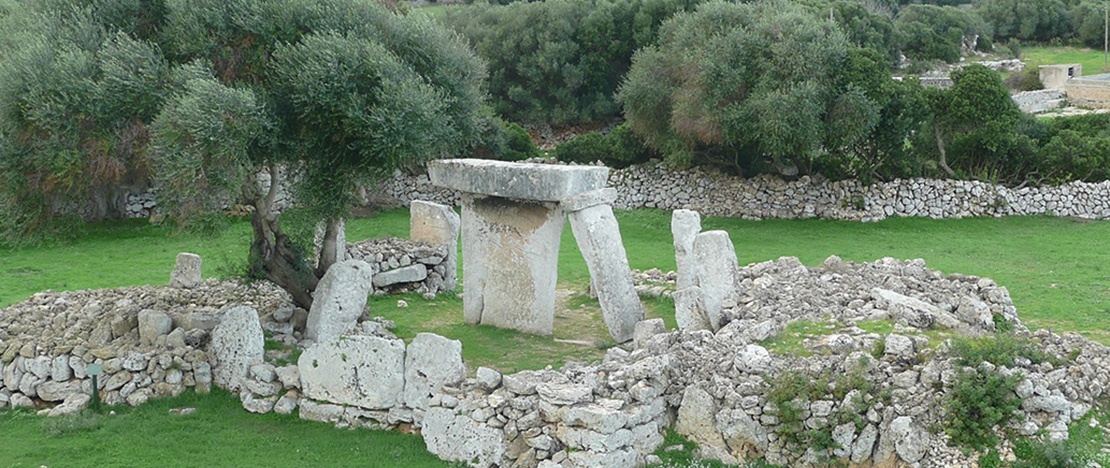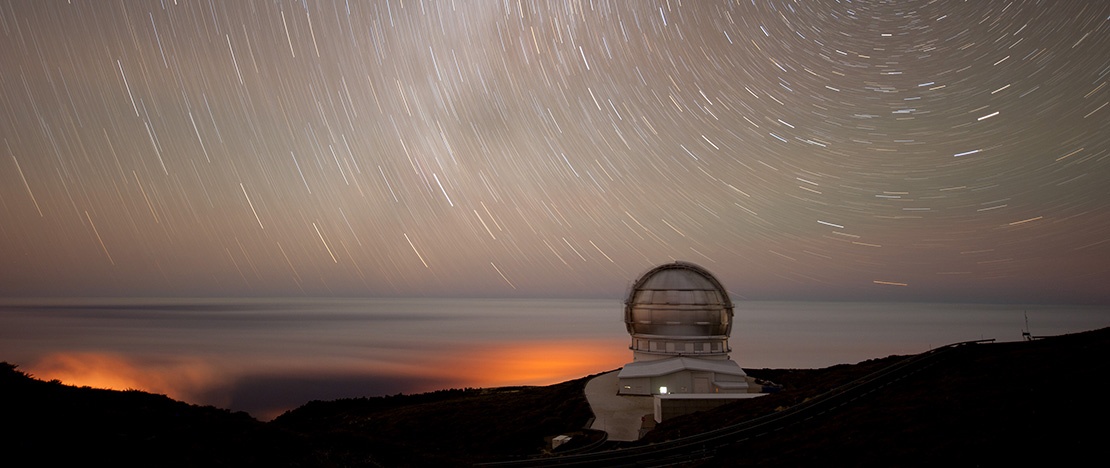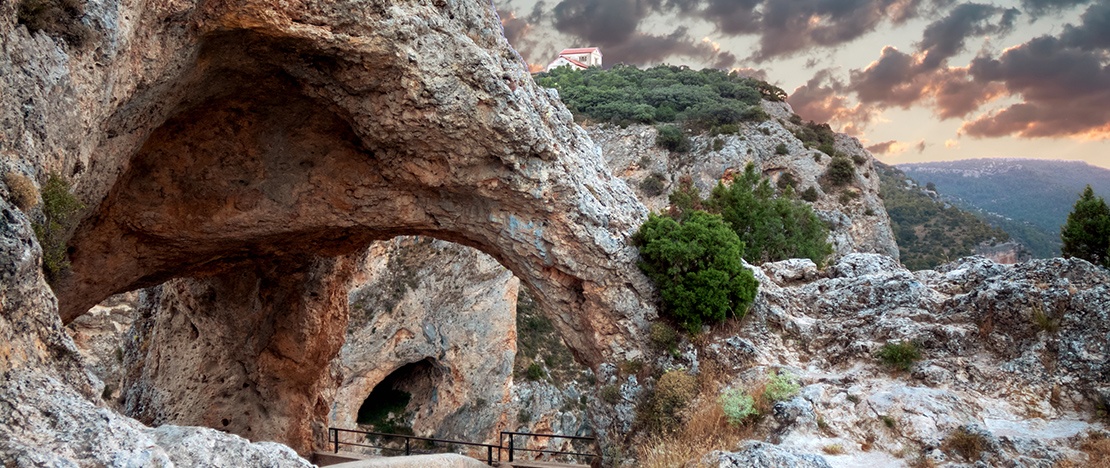When you are on holiday you probably like to go out for dinner at night and walk around a well-lit area, but have you tried turning off the light and looking at the sky? Have you ever seen the rings around Saturn through a telescope?Over 80% of the world’s population are not able to enjoy the stars in all their splendour due to light pollution. But Spain is lucky enough to do so because it has some of the best places for astrotourism in the world. The range of emotions you will tap into with this experience will get you hooked. You will notice planets, double stars, galaxies, and feel like you can touch the Milky Way with your hands.
Why Spain?
- Its clear skies have preserved their natural darkness owing to the lack of light pollution.- There is a high number of useful observation hours there.- The good climate also affords a lot of nights with clear skies.- A lot of the areas from which the stars can be observed are protected natural areas, such as national parks, that are sure to impress visitors.In addition to the magnificent installations, there are country house lodges and small hotels in Spain that specialise in stargazing. These usually have planispheres or star charts, educational materials and a telescope. Can you imagine seeing the image of the Milky Way from a castle courtyard?There are specialist companies and associations that organise experiences around special events such as eclipses and meteor showers. You can combine stargazing with other activities such as horseback riding, biking, hiking, wildlife watching and relaxing out in nature.

Starlight destinations: places where you can almost touch the stars
There are several types of Starlight certifications (Starlight Reserves, Starlight Tourist Destinations, Stellar Parks, Starlight Hotels, etc.) that are granted to places that include sky watching as part of their natural heritage, thus ensuring a quality tourist experience.You can find more information on the Starlight Foundation website, created by the Canary Islands Institute of Astrophysics (IAC).

Best areas of Spain for astrotourism
Let us tell you about some of the Starlight Tourist Destinations that are perfect for stargazing. These are just a few examples. The offers many more, with the list growing every year:
In Andalusia
The Sierra Sur de Jaén is a landscape of mountains and ravines where you can breathe clean air under clear skies. The Andalusia Astronomy Observatory and other organisations regularly organise guided stargazing activities. Some include private services in rural houses where you can observe the stars with telescopes and professional guides.The Sierra Morena offers tourist packages that include a fascinating network of viewing points, stellar accommodation, specialist guides, observation equipment, daytime activities and transport in all-terrain vehicles.


In Asturias
The Allande in Asturias organises the Allande Stars science and astronomy initiative, which highlights the region's cultural and natural riches and promotes protection of the night sky.
In the Balearic Islands
Both Menorca and Formentera are Starlight Tourist Destinations because of their star-studded skies and historical heritage, with centuries of astronomical study.Menorca in particular is known for its rich prehistoric heritage and its links to astronomy. It is home, for example, to the Talaiotic site of Talatí de Dalt, with megalithic structures that show how the ancient inhabitants of the island observed astronomical phenomena.

In the Canary Islands
In Tenerife both the Teide National Park and its peaks, as well as the municipality of Granadilla de Abona, have Starlightcertifications. From this island, you can observe the stars from a volcano at an altitude of more than 2,000 metres, with views of the entire northern celestial hemisphere and part of the southern hemisphere, using the most modern telescopes in the world.La Palma, which is known as the “beautiful island”, is also one of the best places in the world for stargazing. All of its municipalities have astronomical viewing points and its famous Roque de Los Muchachos Observatory, at an altitude of over 2,400 metres, is one of the most complete telescope complexes in the world.The island of Gran Canaria protects its skies from light pollution and has a lot of stargazing viewing points. Here you can enjoy the starry skies of Starlight Destinations such as the municipalities of Granadilla de Abona or La Frontera.

In Castile and Leon
Gredos Norte, a mountain range in the south of the province of Ávila, has a network of stargazing viewing points and holds annual astronomy and astrophotography days, together with the Alberche Valley and Tierra de Pinares region in the same province.In the Soria, the municipalities of Muriel Viejo and Borobia also have Starlight certification, as does the Juarros region in the province of Burgos, Hoces in the Segovia and Truchas in the León.

In Castile-La Mancha
The Serranía de Cuenca boasts an astronomy park in the Serranía nature reserve, a place of huge environmental value that is protected as a National Site of Natural Interest and is part of the Natura 2000 Network.Other certified Starlight destinations in the area include the Alcudia Valley and Sierra Madrona, which are protected areas in the province of Ciudad Real with exceptional natural, historical and cultural heritage.

In Catalonia
In Lleida, Montsec has a large astronomical park, consisting of the Universe Observation Centre (COU) and an Astronomical Observatory, which are together known as the Eye of Montsec.Other places of interest and locations with certificates in Catalonia include the Aigüestortes i Estany de Sant Maurici National Park and the Muntanyes de Prades i Serra de Montsant.

In the Valencian Community
Significant locations in Valencia include the Alto Turia Biosphere Reserve, which is a protected area with beautiful landscapes around the upper stretch of the river, and Tierra Bobal, a wine-growing region in the interior of Valencia around Requena and Utiel.

In Extremadura
The Monfragüe National Park in the province of Cáceres is a special place for bird watching in Spain and offers unrivalled views of the night sky from the Torrejón el Rubio Astronomical Observatory and the Monfragüe Castle viewing point.

In Galicia
The Atlantic Islands National Park in Pontevedra - known by many as “the islands of the gods” - offers the opportunity to stargaze under a clear sky in a protected natural area of extraordinary beauty.In Orense, you can visit the Trevinca massif in the municipality of A Veiga, the highest point in Galicia, as well as other certified destinations such as Muras or the Costa da Morte.

In La Rioja
The Leza, Jubera, Cidacos and Alhama Valleys Biosphere Reserve is a beautiful natural space where activities are organised to observe the starry sky and nocturnal birds life, with everything from nature walks to moonlit bathing in hot springs.

In Navarre
In the heart of the Pyrenees, the Roncal Valley offers clear skies for stargazing in towns like Roncal, Burgui, Vidángoz, Garde, Urzainqui, Isaba and Uztárrol. The sites in the Ribera de Navarra Network are also certified as Starlight Destinations.

Other original spaces for observing the heavens
In other parts of Spain there are locations for stargazing such as the Tiedra Astronomical Centre in Valladolid, the Santa Catalina Botanical Gardens in Álava and the Badajoz Ravine Trail (Güímar-Tenerife).In Aragon, Villar de Salz, a small town in the province of Teruel and the first stargazing site in the region with Starlight certification, is home to the famous Cristina López Hernández astronomical viewpoint, which is named after its oldest inhabitant, a woman who is passionate about stargazing.There are also other original locations for stargazing such as San Pedro Cultural in Becerril de Campos, Palencia, the first astronomical monument. It is an old 12th century Romanesque church that has been converted into an astronomy centre, as it features a Foucault pendulum, or a device to demonstrate the earth’s rotation.Some more original activities? The Reventon Trail El Paso sporting event in La Palma or the Natural Trail Green Route of the Basque-Navarre Railway (Álava). Visit the official website of the Starlight Foundation for more suggestions for excursions, restaurants, farm offers...



